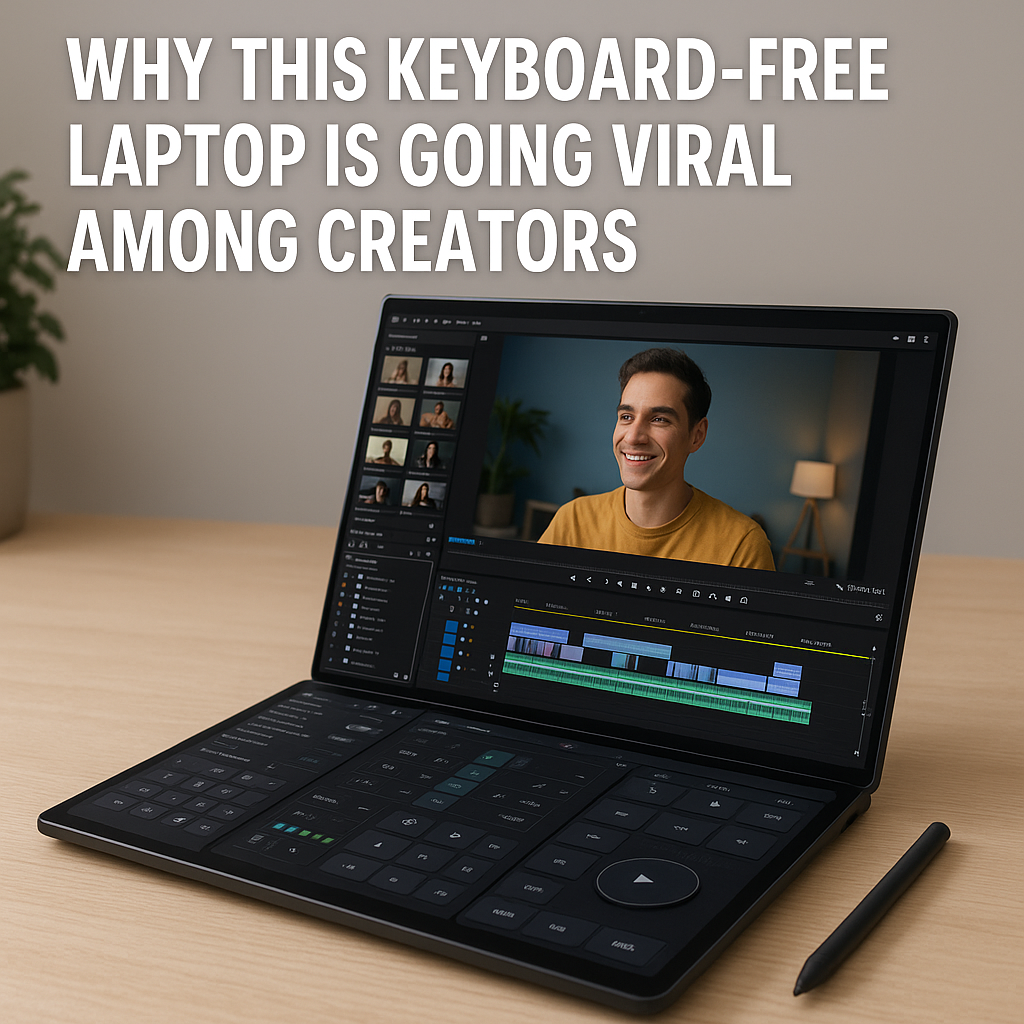
In the ever-evolving world of tech, a new trend has taken the creator community by storm — a keyboard-free laptop. Once considered a far-fetched concept, this innovative device is now making waves for its futuristic design and creator-centric functionality. But what exactly is a keyboard-free laptop, and why is it gaining so much traction among digital creators, designers, and tech enthusiasts? Let’s break it down.
A Radical Redesign of the Laptop
At first glance, the most striking feature of this device is its lack of a physical keyboard. Instead, it features a full touchscreen interface on both the upper and lower panels. This two-screen setup allows for an entirely customizable workspace. Whether you’re a video editor, graphic designer, writer, or music producer, this device can be transformed to suit your workflow.
The lower screen can become a digital drawing pad, a virtual MIDI keyboard, a customizable control panel for editing software, or even a secondary display for multitasking. Creators are no longer confined to traditional keyboard layouts or fixed input methods. This flexibility is a game-changer.
Why Creators Love It
1. Customizable Workflows
One of the biggest selling points is the ability to tailor the device to your needs. Using apps and UI customization software, creators can create personalized interfaces for different tasks. Imagine having Final Cut Pro shortcuts permanently accessible on your lower screen while the video plays on the upper screen — no need for external controllers or clunky keyboard shortcuts.
2. Streamlined Portability
Without a physical keyboard mechanism, the device is slimmer, lighter, and more portable than traditional laptops. Creators who work on the go — in cafes, studios, or during travel — appreciate the convenience of a powerful device that fits easily in a backpack without sacrificing performance.
3. Seamless Integration with Styluses and Touch Input
Digital artists and illustrators especially love the pen support on the second screen. It effectively turns the device into a drawing tablet, making it perfect for sketching, retouching, or precision design work. With pressure-sensitive stylus input, users get a tablet and a laptop in one package.
4. Multifunctional Display Capabilities
Because both screens are high-resolution touch displays, creators can use them in countless ways: from dual-monitor coding environments, to immersive storytelling formats, or even live streaming setups where one screen handles production tools and the other shows real-time interactions.
Tech Behind the Trend
The core technology enabling this revolution includes:
- High refresh rate OLED displays for vibrant colors and smooth interaction
- AI-powered input prediction to help compensate for the lack of tactile keys
- Advanced thermal management systems to keep the thin design cool under pressure
- Modular software ecosystems that allow users to download or build their own layouts
Companies like ASUS (with the Zenbook Duo line), Lenovo, and smaller boutique brands are leading the charge. Some even include haptic feedback systems to simulate keypress sensations, easing the transition from physical keyboards.
Is This the Future of Laptops?
While not everyone is ready to abandon physical keyboards, the popularity of keyboard-free laptops shows that the future is leaning toward modularity and touch-first computing. The rise of cloud-based creative tools, improved gesture recognition, and AI-based assistance further boosts the viability of these devices for daily professional use.
For content creators, the appeal is simple: a device that adapts to them, not the other way around.
Final Thoughts
The keyboard-free laptop trend isn’t just a gimmick — it represents a fundamental shift in how creators engage with their tools. With its unmatched versatility, portability, and customizability, it’s no wonder this new class of device is going viral. As tech continues to evolve, expect to see more creators ditching traditional setups for these futuristic powerhouses.


